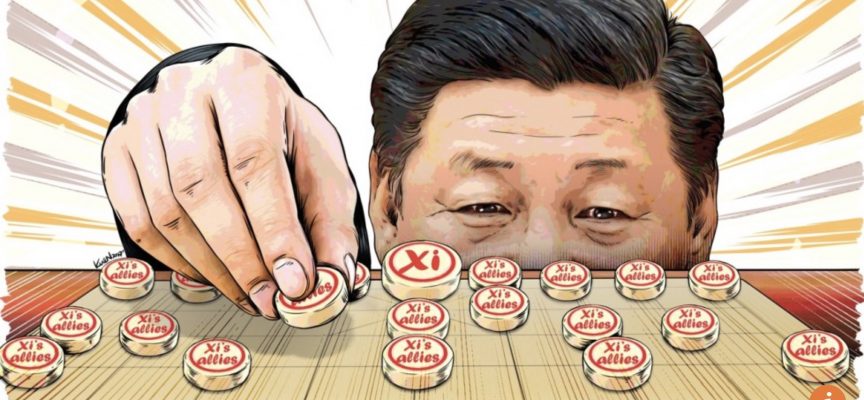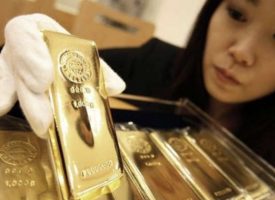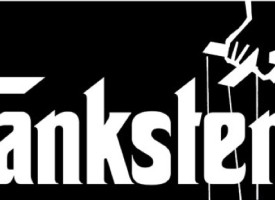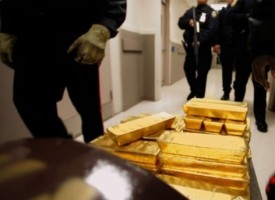On the heels of an additional $267 billion in tariffs against China being threatened, here is a look at one of China’s key weapons, plus a note from one of the greats in the business.
TRADE WAR UPDATE: A Look At China’s Reserves
September 7 (King World News) – Here is a portion of what Peter Boockvar wrote today as the world awaits the next round of monetary madness: Chinese FX reserves in the midst of its currency weakness fell by $8.2b in August, mostly giving back the rise seen in the two prior months. The level of $3.11 Trillion was slightly below the estimate of $3.115 Trillion and that is the least since October but is still pretty steady all things considered in terms of the extent of the yuan weakness.
China’s Currency Reserves Remain Strong

The Chinese government has pretty much stopped relying on FX intervention in order to protect these reserves and is now back to ‘counter cyclical’ steps to stabilize the yuan. Of course too they have capital controls and we have to admit at least to the US, foreign direct investment isn’t so attractive anymore politically. Chinese stocks bounced, getting back most of yesterday’s loss…
Listen to the greatest Egon von Greyerz audio interview ever
by CLICKING HERE OR ON THE IMAGE BELOW.
Boockvar continues: I’ll finish today’s piece by talking about what Fed Vice Chair John Williams said yesterday and what Fed President Eric Rosengren said overnight. Williams in case you missed it said if the data “were to require us to move interest rates up to the point where the yield curve was flat or inverted, that would not be something I would find worrisome on its own.” This is in contrast to Bullard, Bostic and Kaplan who seem to be obsessed with purposely not inverting the curve. Since Williams is Vice Chair, his words carry much more weight.
Rosengren acknowledged that their current inventory of tools “may not be sufficient to offset future shocks, reducing the capacity available to policymakers to insulate the economy from future adverse shocks.” What he won’t say is that this is a problem of the Fed’s doing because they have been so damn slow in reversing their historic accommodation. That will be the difference in the next economic downturn, whenever that might be. The Fed just won’t be the savior that many have been accustomed to in the past. The same can be said for the ECB, BoJ, BoE, SNB, Riksbank, etc…
Also of importance…
Here is a portion of today’s note from Jeff Saut at Raymond James: Most recently, we received this email from our friend, and portfolio manager of Huggan White Wealth Management with Raymond James in Canada, regarding Dow Theory. To wit:
The Three Stages of Primary Bull Markets:
Hamilton identified three stages to both primary bull markets and primary bear markets. These stages relate as much to the psychological state of the market as to the movement of prices. A primary bull market is defined as a long sustained advance marked by improving business conditions that elicit increased speculation and demand for stocks. In a primary bull market, there will be secondary movements that run counter to the major trend.
Stage 1 – Accumulation
Hamilton noted that the first stage of a (secular) bull market was largely indistinguishable from the last reaction rally of a bear market.
Pessimism, which was excessive at the end of the bear market, still reigns at the beginning of a bull market. It is a period when the public is out of stocks, the news from corporate America is bad and valuations are usually at historical lows. However, it is at this stage that the so-called “smart money” begins to accumulate stocks. This is the stage of the market when those with patience see value in owning stocks for the long haul. Stocks are cheap, but nobody seems to want them. This is the stage where Warren Buffett stated in the summer of 1974 that now was the time to buy stocks and become rich. Everyone else thought he was crazy.
In the first stage of a bull market, stocks begin to find a bottom and quietly firm up. When the market starts to rise, there is widespread disbelief that a bull market has begun. After the first leg peaks and starts to head back down, the bears come out proclaiming that the bear market is not over. It is at this stage that careful analysis is warranted to determine if the decline is a secondary movement (a correction of the first leg up). If it is a secondary move, then the low forms above the previous low, a quiet period will ensue as the market firms and then an advance will begin. When the previous peak is surpassed, the beginning of the second leg and a primary bull will be confirmed.
Stage 2 – Big Move
The second stage of a primary bull market is usually the longest, and sees the largest advance in prices. It is a period marked by improving business conditions and increased valuations in stocks. Earnings begin to rise again and confidence starts to mend. This is considered the easiest stage to make money as participation is broad and the trend followers begin to participate.
Stage 3 – Excess
The third stage of a primary bull market is marked by excessive speculation and the appearance of inflationary pressures. (Dow formed these theorems about 100 years ago, but this scenario is certainly familiar). During the third and final stage, the public is fully involved in the market, valuations are excessive and confidence is extraordinarily high. This is the mirror image to the first stage of the bull market. A Wall Street axiom: When the taxi cab drivers begin to offer tips, the top cannot be far off.
***KWN has now released the timely and powerful audio interview with legend Pierre Lassonde and you can listen to it by CLICKING HERE OR ON THE IMAGE BELOW.
ALSO JUST RELEASED: Nowhere To Hide As Global Turmoil Spreads CLICK HERE TO READ.
***KWN has also released the powerful audio interview with Egon von Greyerz and you can listen to it by CLICKING HERE OR ON THE IMAGE BELOW.
© 2018 by King World News®. All Rights Reserved. This material may not be published, broadcast, rewritten, or redistributed. However, linking directly to the articles is permitted and encouraged.










